Welcome to an exciting journey into the world of tattooing and art with Alina Vax, an experienced tattoo artist and artist.
With years of industry experience, Alina has gained recognition not only in Russia but also internationally, successfully showcasing her works at various tattoo festivals in Europe. Her talent and unique style have captured not only the hearts of clients but have also earned her well-deserved awards, including Best Collaboration at the Moscow Tattoo Festival 2022.
Alina is more than just a tattoo artist; she is a wholly creative artist, exploring various genres from Japanese mythology to watercolor painting. Her passion for art extends beyond the confines of skin, finding expression in illustrations crafted with meticulous attention to detail. In this interview, you'll discover more about her life, creativity, travels, approach to inspiration, and future plans.
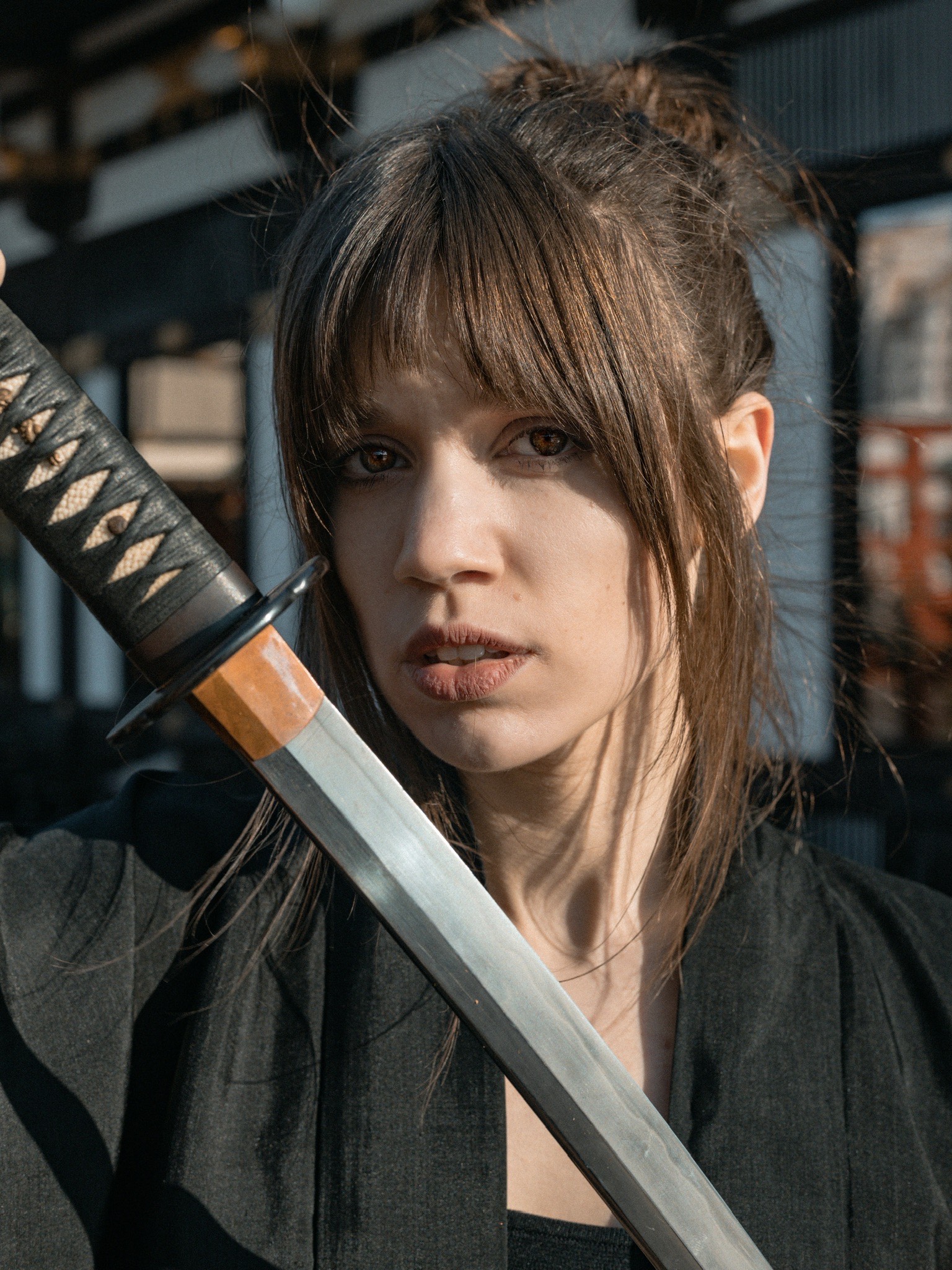
Let's start with a brief introduction. Where are you originally from? How long have you been working in Moscow? Do you have your own studio? Where are you currently working?
- Hello, my name is Alina Vax. I was born in the Don region, in the Ust-Hoperskaya stanitsa (according to Sholokhov). When I was very young, my family moved to Penza. Later, I enrolled in Moscow. I worked in Moscow for 8 years, took control of the 'Fuga' studio at the Danilovskaya Manufactory, and this year moved to Germany.
How many years have you been in tattooing? How did you start?
- I've been tattooing for 7 years. When the realization hit me, it was truly a thunderbolt out of the blue: I had no tattoo artist friends, and I didn't even have tattoos myself.
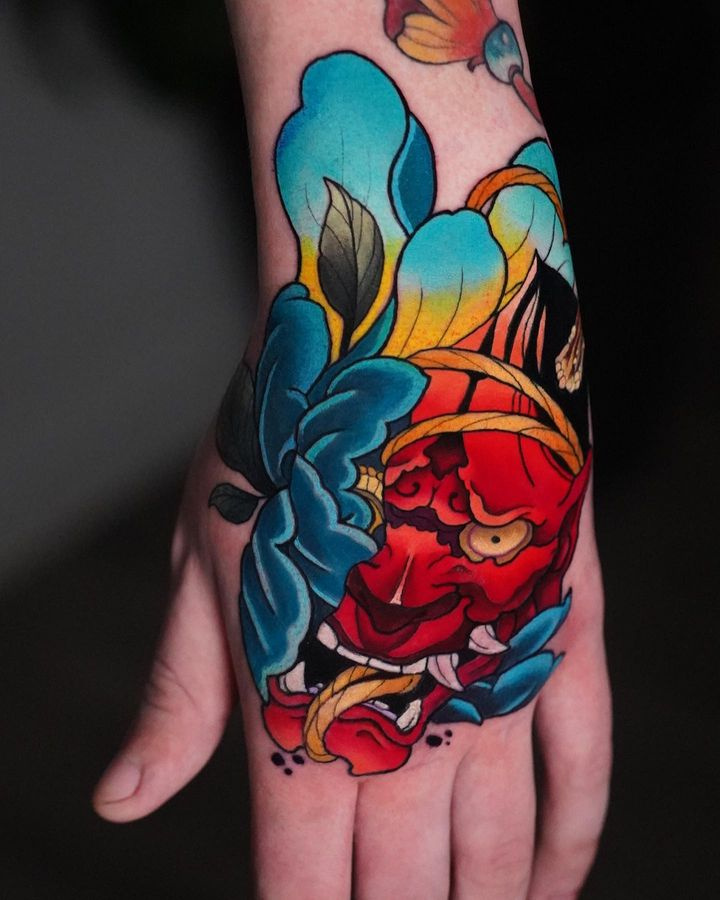
We read in your Instagram profile that you independently received art education. How did it help you as a tattoo artist?
- Art education helped primarily in sketching and finding my direction, in the right approach to drawing and the arrangement of contrasts. But still, I want to emphasize that the skin differs significantly from canvas, paper, and tablets (laughs).
How did you become interested in Japanese themes in tattooing? What attracts you to this culture?
- In reality, my transition to Japan was initially accidental. I went to a guest spot in Norway, and a local artist wanted a tattoo from me, suggesting a Hannya mask. At that time, I didn't know what it was. I was primarily interested in female portraits and skulls.
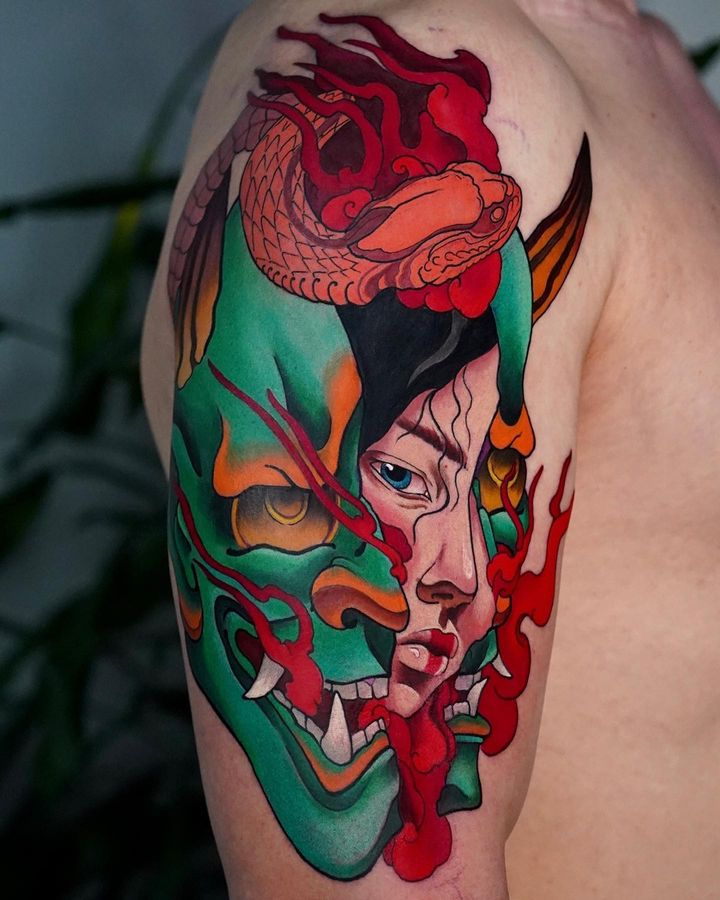
We compromised: the upper half of the tattoo would be a female face, and the lower half would be the Hannya mask. I struggled with this sketch for three days, as I had to study a new form for myself. Then I tattooed it, posted it on my Instagram, and that post blew up. For a while, I mixed realism with Japan, delving deeper into mythology, background, symbolism, and eventually, Japan completely absorbed me.
Evaluate how popular classical Eastern culture and Japanese tattooing are in Russia.
- Russia is currently experiencing a boom in Neo-Traditional and Neo-Japan styles in graphic arts, so to speak. If realism used to dominate firmly, for the past couple of years, there has been a noticeable shift in attention from both the audience and the artists towards more "drawing" styles. Clients want works not based on references and photos worn out to the point of being threadbare but individual, well-readable projects.
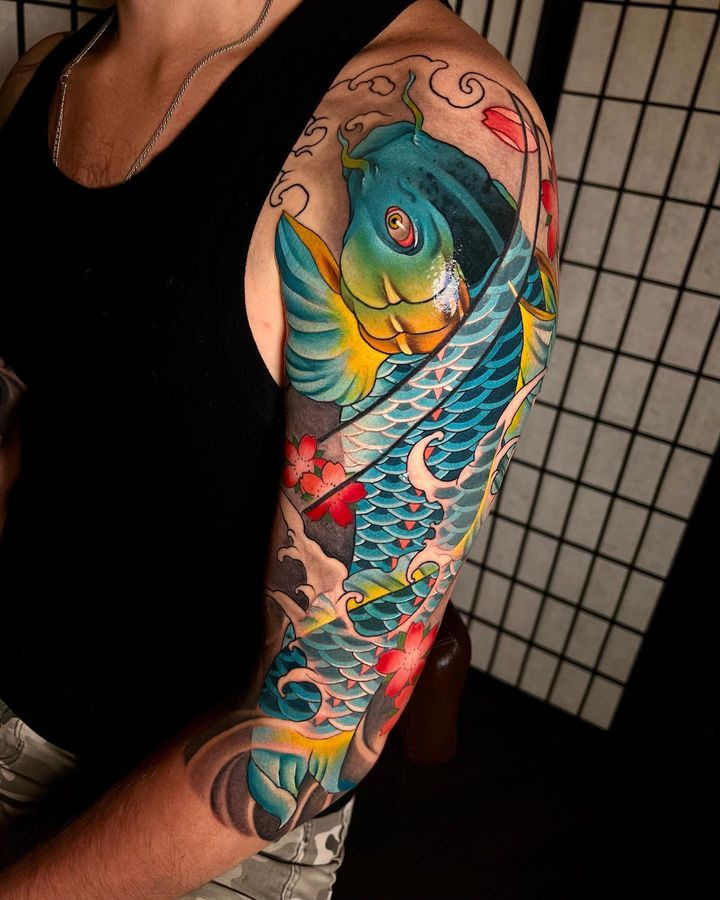
More and more people are starting to hear the term "Neo-Japan." Can you explain what it means? And how does Neo-Japanese tattooing differ from classical?
- Japanese tattooing and Irezumi involve adherence to a fairly large number of rules and canons. This applies to placement, background, composition, and a limited color palette. Neo-Japan retains Japanese symbolism, narratives, structures, but the tattoo artist has more freedom in terms of color palette and combination of elements.
I believe that knowledge of the canon is useful, and for some clients, it may be essential, but if it goes against the graphic aspect of the project for the sake of the 'canon,' it's incorrect. Above all, it should work with anatomy.
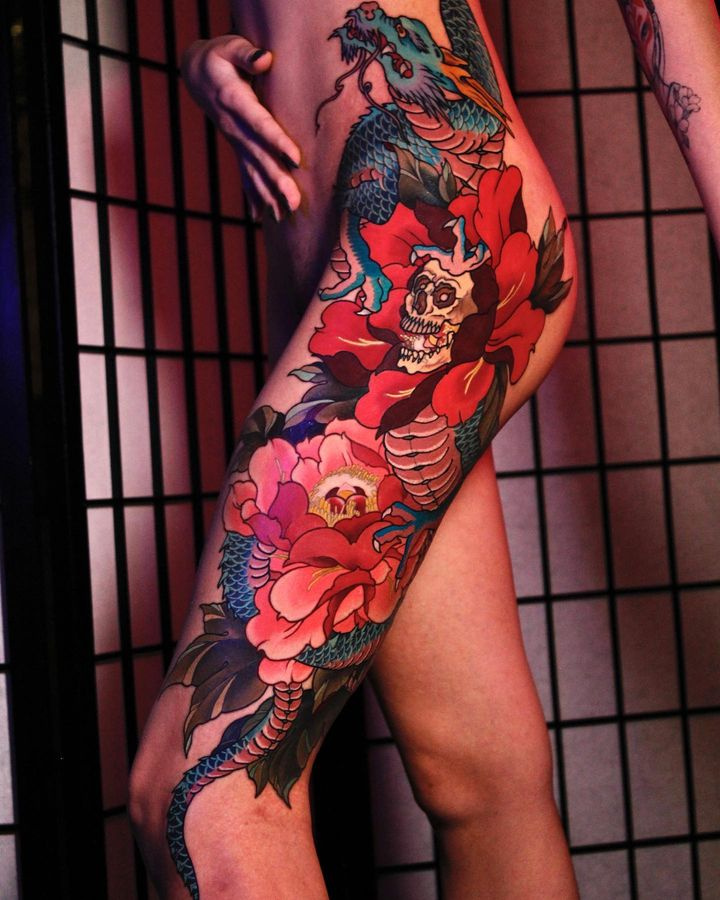
Name the most characteristic features of your portfolio.
- Anatomy is what stands at the forefront for me. Solid saturation won't leave anyone indifferent; many clients come to me specifically for rich, dense colors.
I have a love for weird creatures. I genuinely enjoy using motifs that are quite rare, despite being the mother of carps. Some of these motifs include ushi-oni, tsuchigumo, kasa-obake, rokurokubi, oiwa, and others.
Is tattooing art, a job, or something else for you?
- Tattooing is a way of living. A tattoo artist doesn't work from 9 to 5 and then go home. It's undoubtedly a philosophy, but also a craft by which we, as artists, make a living. It encompasses community, festivals, understanding the structure of the skin, sales, and sketches. The presence of so many aspects makes it a way of life if you genuinely want to succeed in it.
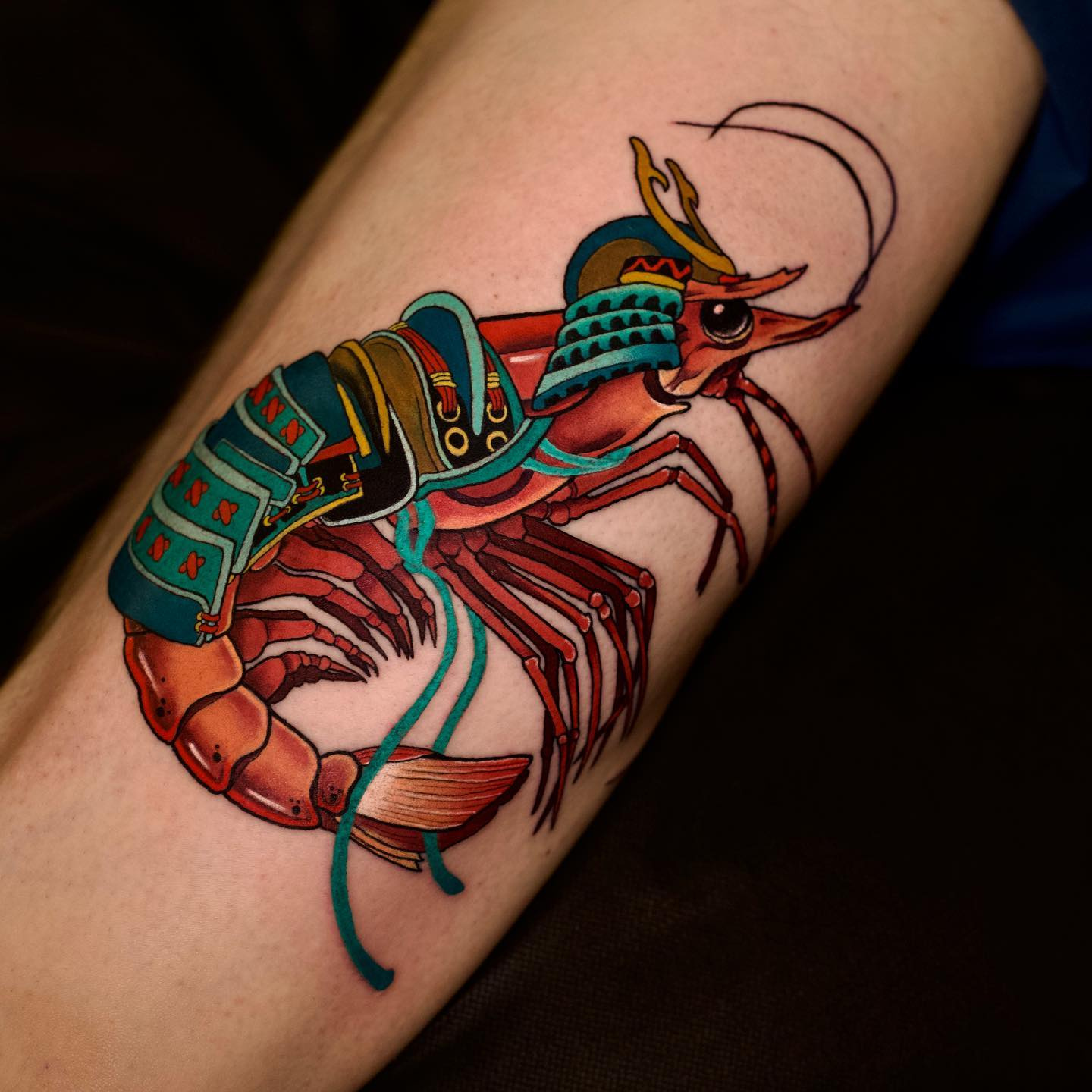
Where do you draw inspiration for your work?
- Inspiration is heavily romanticized, in my opinion. I draw every day after my morning workout at 6-7 am. It's a habit. And if I don't draw for a few days, I feel weird. Of course, I'm inspired by Japanese gravures; I have a small collection of books dedicated to Japanese art and tattooing. One of my gems is "Scrolls" by Horioshi III. It all inspires me a lot, but it's not just inspiration; I study these books as manuals.
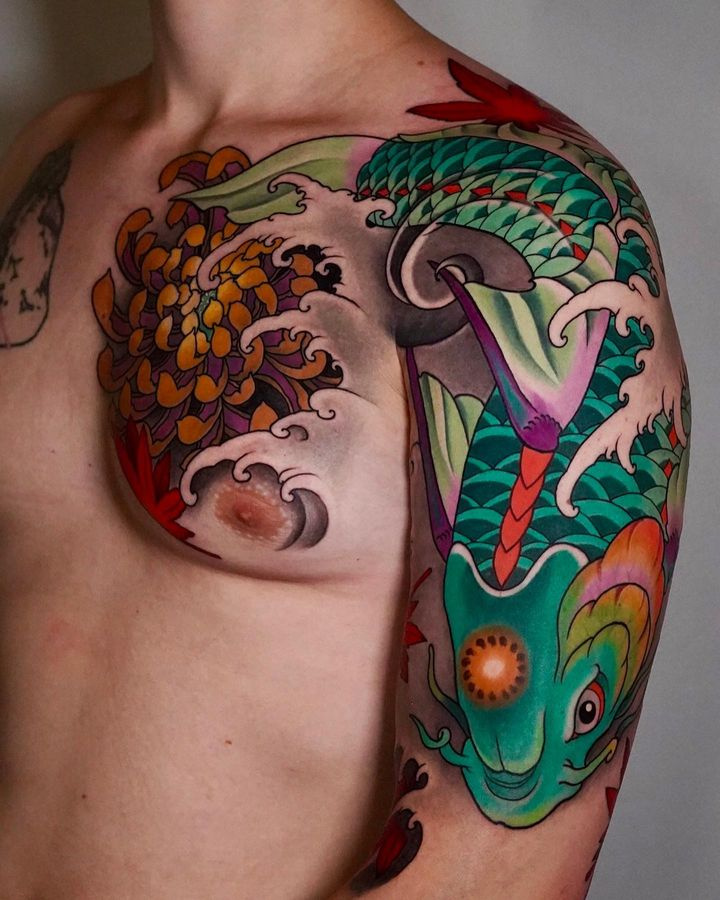
Do you usually work based on clients' ideas or your own? What type of requests do you receive most often?
- Actually, because I shared Japanese myths on my Instagram page, talking about yokai, gods, demons, and Japan in general, people often come to me with cool ideas. Sometimes a person entrusts me with a part of their body for complete creative freedom, and it's always an exciting moment for me. Such clients are true unicorns, rare and immensely valuable.
Do you have favorite projects? Or works that you are truly proud of?
- I have a very beloved sleeve with yokai (demons), where even the armpit is fully inked. Lately, people I've already done sleeves or ribs for are returning for other significant projects, gradually forming these fragmented costumes.
Do you travel a lot? Where have you been, and do you have a favorite place on the planet?
- I travel a lot; I'd like to do it a bit less (laughs) I usually combine travel with work. I've worked in Norway, Germany, Spain, Dubai, Tel Aviv, Indonesia.
One of the most impressive places I can mention is Mount Ijen on Java Island, where there's a crystal-clear lake with acid in the middle, and around it, sulfur fumes and otherworldly dried-up trees. Rising at dawn, this sight will leave you speechless, especially if the weather is clear.
I really want to visit Japan; it's about time. After all, I am an artist in Japanese tattoo.
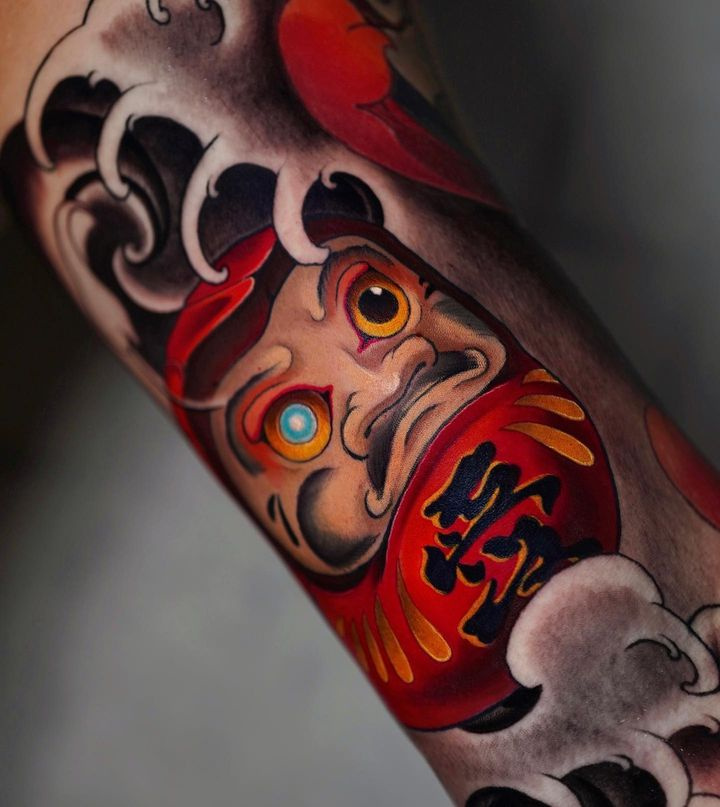
You're a frequent guest at tattoo conventions and festivals. Tell us about the awards you've won and how you would assess your experience participating in tattoo festivals?
- I won the Best Collaboration award in 2022 at the Moscow Tattoo Festival. Currently, my goal is more focused on European conventions. Conventions are genuinely about community for me, not just prizes. Artists are often on the road, and meeting someone usually happens at conventions.
Where can we meet you in the coming year? Do you plan to participate in conventions in 2024?
- In 2024, I'll mostly be in Germany and Europe with occasional visits to Moscow.
What is your main goal in your career?
- My main goal is to grow not only as a tattoo master but also as an artist in a broader sense. I want to delve deeper into watercolors, release a book with illustrations, sell prints and original paintings, and eventually establish a power place for myself — my tattoo studio/art space that can thrive even when I'm not there.
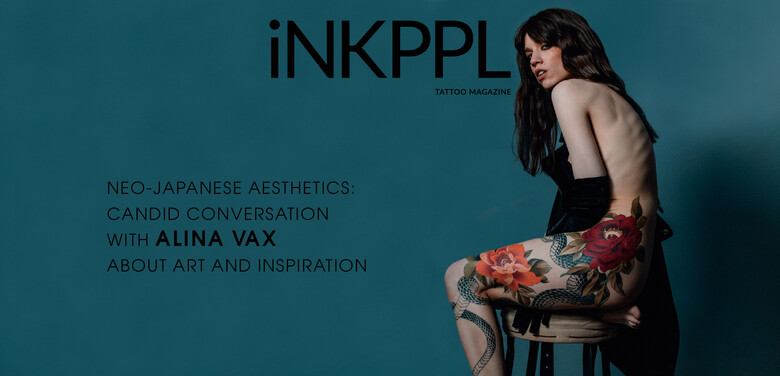







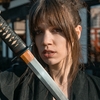
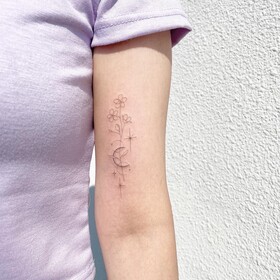
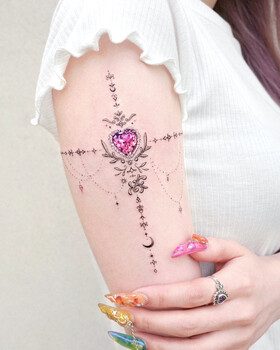
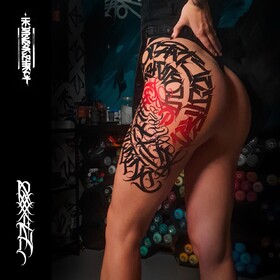
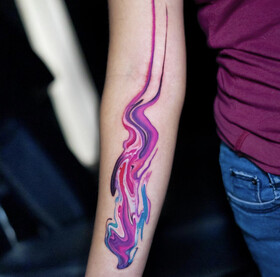
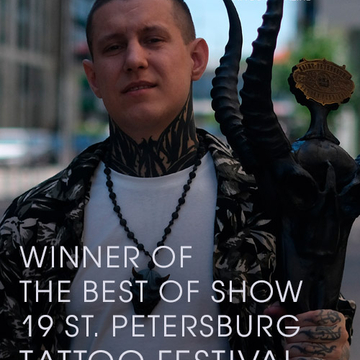
Comments (0)